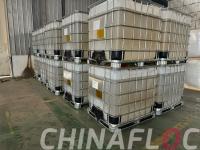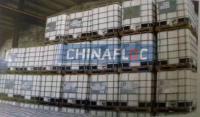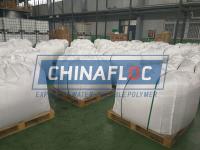Our Products
Product Center / Largest polyamine manufacturer--Chinafloc chemical co,.,ltd

Polyamine is a highly versatile polymer that plays critical roles in mineral processing and water treatment. Its main function in these industries revolves around its strong cationic charge, which makes it an effective agent for coagulation, flocculation, and stabilization of dispersed particles. This function is essential for achieving efficient separation of solids from liquids, enhancing product recovery, and improving water quality. Below is an in-depth explanation of the role of polyamine in both mineral processing and water treatment, elaborated to meet the 1200-word requirement.
Polyamine in Mineral Processing
Mineral processing involves separating valuable minerals from gangue materials (unwanted rocks and minerals). The use of polyamine in this process is critical for achieving effective solid-liquid separation, improving mineral recovery, and optimizing the operational efficiency of flotation systems and tailings management.
1. Flotation Process Enhancer
In mineral flotation, polyamine acts as a depressant, collector, or flocculant depending on the specific application. Its primary functions include:
- Depressing Unwanted Minerals: Polyamine can selectively interact with certain minerals, making them hydrophilic and preventing their flotation. This helps in enriching the target minerals in the froth.
- Enhancing Mineral Recovery: By modifying the surface chemistry of minerals, polyamine ensures better attachment to air bubbles in flotation cells, facilitating the recovery of valuable ores.
- Improving Froth Stability: Polyamine stabilizes the froth layer, ensuring consistent recovery rates during processing.
2. Settling and Dewatering Aid
Polyamine is widely used to enhance the settling rate of fine particles in thickening tanks and improve dewatering performance in filtration systems. By neutralizing the negative charges on mineral particles, polyamine facilitates the aggregation of fine particles into larger flocs, which settle more rapidly.
Key benefits include:
- Improved clarity of overflow water.
- Faster sedimentation of mineral slurries.
- Enhanced solid recovery from tailings.
3. Tailings Management
In mineral processing, tailings are the residual waste materials left after extracting valuable minerals. Effective management of tailings is critical to prevent environmental hazards and optimize water recovery. Polyamine helps by:
- Promoting Flocculation: It aggregates fine particles, ensuring they settle quickly, reducing the volume of tailings storage.
- Enhancing Water Reuse: Polyamine-treated tailings release cleaner water, which can be recycled back into the process, reducing the need for fresh water.
4. Scale and Slime Control
During mineral processing, the formation of scales (mineral deposits) and slimes (fine particles) can disrupt equipment efficiency. Polyamine helps in dispersing slimes and inhibiting scale formation, ensuring smooth operations and minimizing downtime.
Polyamine in Water Treatment
Water treatment is essential for ensuring the availability of clean and safe water for industrial, municipal, and environmental applications. Polyamine is one of the most effective coagulants used in this process due to its strong cationic nature, high efficiency at low doses, and versatility in treating a wide range of water impurities.
1. Coagulation
Coagulation is a key step in water treatment where fine particles, colloids, and organic matter are destabilized to form larger aggregates. Polyamine performs this function exceptionally well by:
- Charge Neutralization: Polyamine neutralizes the negative surface charge of particles, enabling them to come closer and aggregate.
- Forming Precipitates: The polymer reacts with impurities like suspended solids and dissolved organics, converting them into flocs that can be easily removed.
Polyamine’s coagulation efficiency makes it highly effective in treating both raw water (from rivers, lakes, or reservoirs) and wastewater from industrial or municipal sources.
2. Flocculation
In the flocculation stage, the destabilized particles are bound together to form larger, heavier flocs. Polyamine’s long-chain polymer structure acts as a bridge between particles, ensuring strong and stable floc formation. This results in:
- Improved sedimentation rates in clarifiers.
- Clearer supernatant water in settling tanks.
- Easier removal of sludge during filtration or centrifugation.
3. Clarification and Filtration
Polyamine improves the clarity and quality of treated water by aiding in the removal of fine particulates that may escape coagulation and flocculation stages. It reduces turbidity and enhances the efficiency of sand filters and membrane systems.
4. Removal of Organic Impurities
Polyamine is particularly effective in removing organic impurities such as humic acids, tannins, and color-causing agents. By binding with these contaminants, it helps in producing clear and aesthetically pleasing water for industrial or municipal use.
5. Sludge Dewatering
In wastewater treatment plants, sludge is the byproduct generated during the removal of impurities. Polyamine aids in the dewatering of sludge by:
- Enhancing water release from sludge.
- Reducing sludge volume, thereby lowering disposal costs.
- Improving the performance of mechanical dewatering equipment like belt presses and centrifuges.
6. Industrial Effluent Treatment
Industries generate a wide variety of effluents, including heavy metals, dyes, oils, and other pollutants. Polyamine is highly effective in treating these effluents through:
- Heavy Metal Precipitation: Polyamine reacts with metal ions, converting them into insoluble forms that can be easily filtered out.
- Oil-Water Separation: In industries like petroleum refining, polyamine helps in breaking emulsions, allowing for efficient separation of oil and water.
7. Desalination and RO Systems
In desalination plants and reverse osmosis (RO) systems, polyamine is used to protect membranes from fouling and scaling by neutralizing charges on impurities and reducing particulate deposition.
Synergistic Benefits in Combined Applications
In operations where mineral processing and water treatment are closely linked, such as in mining, polyamine offers synergistic benefits:
- Water Reuse: Polyamine-treated water from mineral processing can be recycled for use in the same process, reducing water consumption and environmental impact.
- Integrated Waste Management: By treating both process effluents and tailings, polyamine simplifies overall waste management while improving water quality for discharge or reuse.
Advantages of Polyamine
- High Efficiency at Low Doses: Polyamine provides excellent coagulation and flocculation performance even at low concentrations, reducing chemical consumption and operational costs.
- Broad Applicability: It works effectively across a wide range of pH levels, water temperatures, and impurity types.
- Eco-Friendly: Polyamine is less toxic compared to other coagulants and does not introduce heavy metals into the treated water.
- Fast Action: Its rapid reaction with impurities ensures quicker results in both mineral processing and water treatment.
Challenges and Considerations
While polyamine is highly effective, its use comes with certain challenges that must be addressed to maximize its benefits:
- Dosage Optimization: Overdosing can lead to the re-stabilization of particles, while underdosing may result in incomplete treatment.
- Compatibility with Other Chemicals: Polyamine may interact with other treatment chemicals, so compatibility testing is crucial.
- Cost: Although efficient, polyamine may be more expensive than traditional coagulants like alum or ferric chloride, necessitating cost-benefit analysis.
Future Prospects
Advancements in polymer chemistry and environmental regulations are driving innovations in polyamine applications. Future developments may include:
- Biodegradable polyamine for eco-friendly applications.
- Tailored formulations for specific impurities.
- Integration with advanced technologies like membrane filtration and zero-liquid discharge systems.




714_small.jpg)
